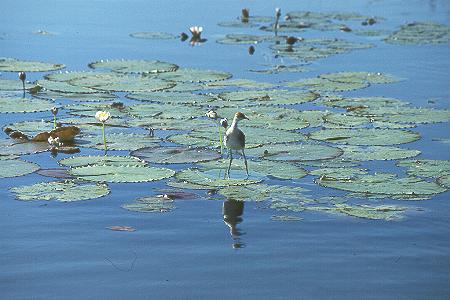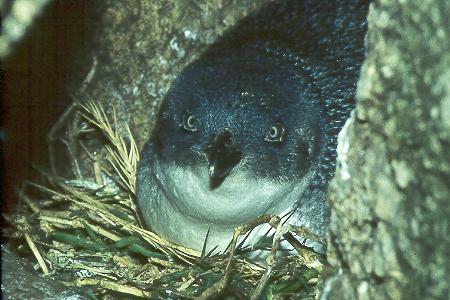 |
 |
|
| Goffini-Kakadus (Cacatua Pastinator) Little Corellas (Cacatua Pastinator) |
Rosa-Kakadus (Eolophus roseicapilla) Galahs (Cacatua roseicapilla) |
| Vögel Australiens | Australian Birds |
| Australien ist eine Land der Vögel: Jeder kennt den Wellensittich und die (weißen) Kakadus. Aber es gibt weit mehr Arten zu entdecken! | Australia is a country of birds: Everybody knows the budgerigar and the (white) cockatoos. But there is much more to discover! |
 |
 |
|
| Goffini-Kakadus (Cacatua Pastinator) Little Corellas (Cacatua Pastinator) |
Rosa-Kakadus (Eolophus roseicapilla) Galahs (Cacatua roseicapilla) |
| Regenbogenlori (Trichoglossus haematodus) Rainbow Lorikeet (Trichoglossus haematodus) |
 |
| Das Australische Blatthühnchen (Irediparra gallinacea) schreitet dank einer außergewöhnlich langen Hinterzehe leicht auf Wasserpflanzen. Die langen Beine scheinen den Flugstart allerdings etwas zu behindern. The Comb-crested Jacana (Irediparra gallinacea) can easily walk on waterweeds thanks to an exceptionally long hind toe – a habit which has given it the popular names of Christbird and Lilytrotter. |
 |
| Das Australische Blatthühnchen (Irediparra gallinacea) wird auch als "Lotusbird" bezeichnet. The Comb-crested Jacana (Irediparra gallinacea) is also called "Lotusbird". |
 |
| Streitende Spaltfußgänse (Anseranus semipalmata). Diese Art mit nur halben Schwimmhäuten und kräftigen Hinterzehen ist an der Nord- und Ostküste Australiens noch häufig anzutreffen, im Süden aber ausgerottet. Quarelling Magpie Geese (Anseranus semipalmata). This species with only half-webbed feet and strong hind toes is still numerous at the northern and eastern coast of Australia but extinct in the south. |
 |
| Der "Gescheckte" Reiher (Ardea picata) kommt nur in den Tropen vor, ist also auf die Nordküste Australiens beschränkt. Die Jagd erfolgt weniger durch Ansitz als durch schnelles Schreiten und Picken. The Pied Heron (Ardea picata) is restricted to the tropics, i. e. the northern Coast of Australia. It catches its prey not so much by a heron-like wait-and-watch strategy but by quick walking and pecking. |
 |
| Der Graulaubenvogel (Chlamydera nuchalis), mit 33–37 cm Körpergröße der größte der australischen Laubenvögel, schmückt seine Balzlaube mit Steinchen, Knochen, gebleichten Schneckenhäusern etc. The Great Bowerbird (Chlamydera nuchalis), 33&37 cm long and the largest of the Australian bowerbirds, decorates its bowers with small stones, bones, bleached snail shells etc. |
 |
| Gleitaaare sind ein häufiger Anblick am australischen Himmel. Kites are common sights in the Australian sky. |
 |
| Die Spinifex-Taube gehört zu den wenigen Vögeln, die an das aride Grassland Zentral- und Nordaustraliens angepaßt sind und daher dort ganzjährig leben. The Spinifex Pigeon is one of the few birds adapted to living in the arid spinifex grasslands of central and northern Australia and therefore living there at all times. |
 |
| Fünf Kormoran-Arten kommen in Australien vor, drei mit weißer Unterseite, und außerdem der agile Schlangenvogel. Five cormorant species are at home in Australia, three of them with white underparts, plus the agile Darter. |
 |
| Der Rabenkakadu (Calyptorhynchus funereus) ist ein Vogel der Eukalyptus-Wälder und Kieferplantagen im Südosten. Mit seinem schmalen, scharfen Schnabel kommt er gut mit Kiefern- und Banksiazapfen zurecht. The Yellow-tailed Black Cockatoo (Calyptorhynchus funereus) is a bird of the eucalypt forests and pine plantations in the south-east. Its narrow and sharp-pointed bills are well-fitteed for the cones of pines and banksias. |
 |
| Die Kap-Barren-Gans lebt an der Südküste Australiens; sie ist keine typische Gans und hat viel gemein mit den "Halbgänsen" (Tadornini). The Cape Barren Goose lives at the southern coasts of Australia; it is no typical goose and has much in common with the shelducks. |
 |
| Der Zwergpinguin (Eudyptula minor) lebt und nistet entlang der Küste und den Inseln im Südwesten und Südosten (einschließlich Tasmanien) und stellt dort eine der Touristenattraktionen dar. The Little Penguin (Eudyptula minor) roosts and nests along the coast and islands in the south-west and south-east and is one of the tourist attractions there. |
 |
| |
Säuger | Mammals |